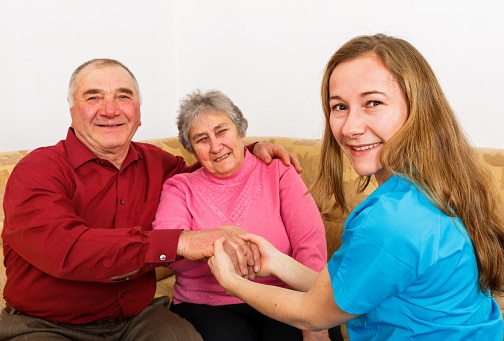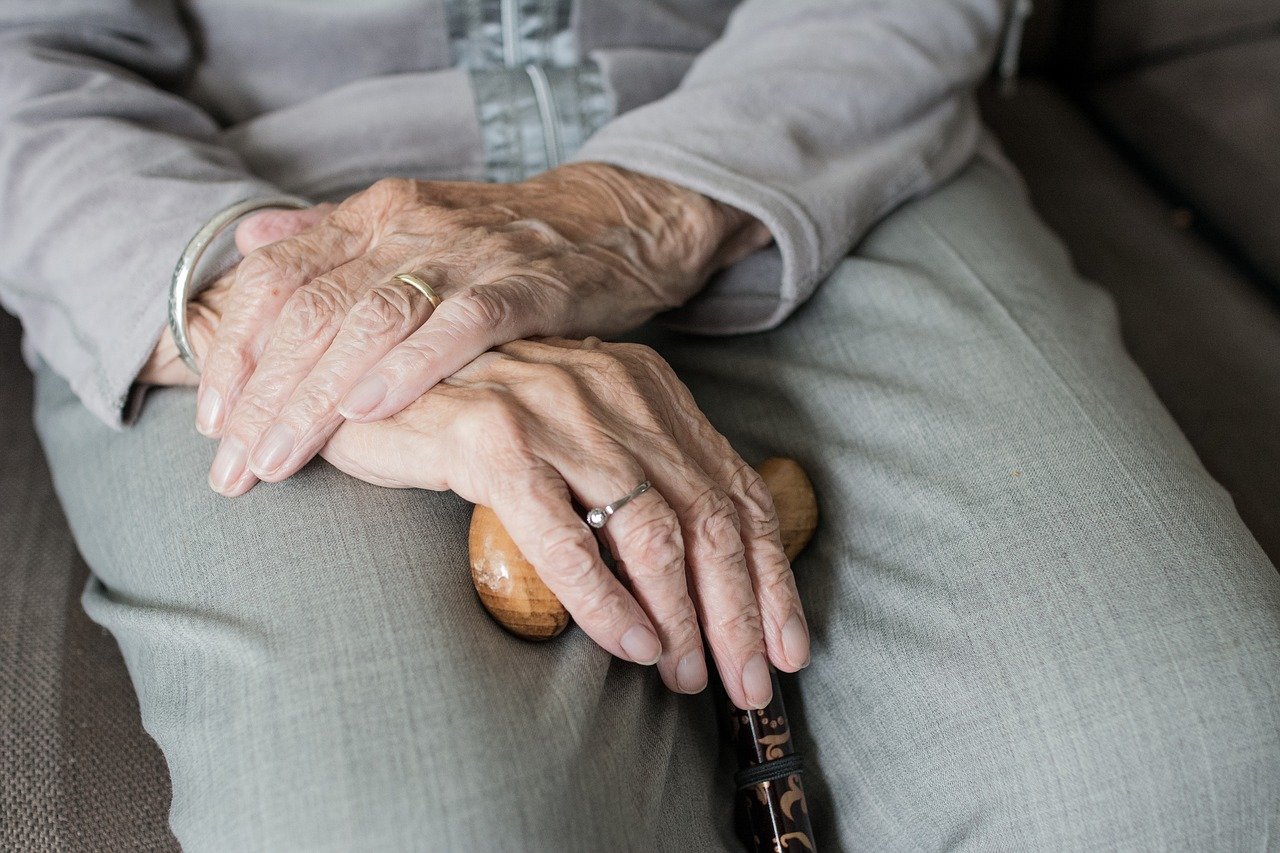
A Caregiver’s Guide to ADLs and IADLs
This article has been medically reviewed by Dr. Martin Duggan in 2021.
This content is not intended to be a substitute for professional medical advice, diagnosis, or treatment. Always seek the advice of your physician or another qualified health provider with any questions you may have regarding a medical condition.
As a family caregiver, your awareness of your loved one’s ability to care for themself is crucial to your role. You need to know which daily activities they can handle on their own, and which ones will require your assistance. These activities are often collectively referred to as activities of daily living, or ADLs. ADLs are broken up into several categories, including necessary activities like personal hygiene, dressing, and feeding.
More complex tasks are often involved with caregiving as well. These tasks that require a higher level of cognitive and organizational skills are often called instrumental activities of daily living, or IADLs.
IADLs and ADLs differ in that IADLs are more complex tasks, such as managing a medication routine or going shopping independently. Since IADLs require a higher level of independence, they will usually be the first tasks a senior needs help with. On the other hand, basic ADLs are more essential to a person’s survival.
Let’s take a more in-depth look at ADLs and IADLs. We will discuss the meaning, categories, and examples of each and how they differ from one another. Understanding ADLs and IADLs will help you offer the best care possible for your loved one. This information will help you ensure your senior has the support they need to maintain independence and enjoy their day-to-day life as much as possible.
What does ADL mean?
The term ADL means activities of daily living, a term coined by Sidney Katz in 1950. ADLs are a way of measuring a senior’s functional ability. Assessing and maintaining awareness of these abilities assures the individual can maintain a high quality of life despite possibly needing assistance or care. ADLs are a way of measuring a senior’s eligibility or need for alternate living arrangements like nursing care facilities. They can also help measure outcomes for rehabilitative treatments.
What is a basic ADL?
ADLs are a tool used by many different medical and non-medical care providers who will likely work with your loved one at one point or another. They are broken up into basic ADLs or physical ADLs and instrumental ADLs. Usually, the term ADL refers to the basic ADLs, which are further divided into several categories. Understanding how your loved one performs in these categories not only helps you develop an appropriate plan of care. It can also determine whether they are eligible for state or federal assistance programs.
Below are the categories and basic ADL examples. Use these to get a better idea of how to measure your loved one’s basic ADL abilities and explain them to other care professionals in their life.
- Ambulating: An person’s ability to walk and transition from one physical position to another.
- Feeding: An individual’s ability to feed themselves independently.
- Dressing: The ability to choose appropriate clothing and put them on independently.
- Personal hygiene: The ability to maintain proper bathing and grooming habits independently. These include nail care, hair care, and dental hygiene.
- Continence: A person’s ability to control their bladder and bowel functions.
- Toileting: An individual’s ability to get to, use, and get up from the toilet independently. This includes appropriate use and cleaning during the toileting process.
What does IADL mean?
IADL stands for instrumental activities of daily living. This category within the ADL measurement system describes more complex aspects of taking care of oneself independently. These skills are more challenging for the elderly and affect their ability to live as independent members of their communities. These are likely the first activities your loved one needed assistance with. They may not be crucial to their survival, but these activities help an individual thrive.
What is an IADL?
Instrumental activities of daily living also have several categories. Each of these is a crucial element in your loved one’s life that you may already be supporting. Knowing these categories can offer you a tool for communicating your loved one’s functional status with the people in their lives. Here are the types and IADL examples.
- Transportation and shopping: An individual’s ability to secure transportation and shop for necessities, including clothing and food. This could be either by driving themselves or independently securing another means of transportation.
- Managing finances: A person’s ability to independently manage their own bank accounts, pay bills on time, and take care of their other financial assets.
- Shopping for and preparing meals: An individual’s ability to carry out the tasks needed to make a meal independently. This involves shopping, preparing, and serving food.
- Home cleaning and maintenance: A person’s ability to independently maintain a clean, organized, and functional home that is welcoming for visitors.
- Communication with others: One’s ability to independently maintain communication with others through the mail and by telephone.
- Managing medications: An individual’s ability to pick up prescriptions and take them as directed by their doctor.
Comparing ADL vs. IADL
While both ADLs and IADLs are essential for an individual to thrive, basic activities of daily living are more critical to their survival since they include things like feeding, movement, and hygiene.
On the other hand, instrumental activities of daily living focus more on an individual’s ability to live independently as a community member. As a caregiver, you will likely assist with both of these types of activities. Your involvement with each is likely to shift, depending on your loved one’s physical and cognitive conditions.
What affects ADLs and IADLs?
Aging naturally affects ADLs and IADLs in many older adults to some degree. Healthy seniors may sometimes need assistance with tasks like shopping and mobility. However, certain aspects of their mental and physical state can cause IADLs and basic ADLs to become more limited. Here are a few of the factors that may limit an individual’s basic and instrumental activities of daily living:
- Age: Older age is the top factor involved with ADL and IADL limitations.
- Pain: High levels of pain can affect your loved one’s ability to carry out certain activities.
- Medication side effects: According to a study, people who were taking five (5) or more types of medication were more likely to experience limitations to their ADLs and IADLs.
- Cognitive decline: Cognitive decline associated with dementia and similar conditions can significantly impact an individual’s activities of daily living over time.
- Chronic illness: Chronic illness can also affect a person’s ability to carry out basic and instrumental activities of daily living.
- Other disabilities: Other disabilities can play a role in your loved one’s ADL and IADL measurements as well, especially if they are associated with pain, mobility, or cognitive impairments.
- Mental health: Studies have also shown that mental health conditions like depression can affect a senior’s ability to perform basic and instrumental ADLs.
- Social factors: Research has also suggested that social factors tie into an individual’s ADLs and IADLs measurements.
The significance of basic ADL and IADL assessments
As you can see, activities of daily living are an essential part of assessing your loved one’s condition and ensuring they have the support they need. But when are they used? Here are some examples of professionals who would use the ADL measurements and how they might utilize them to take better care of your loved one.
- Healthcare providers: Healthcare providers can use ADLs as a measurement for assessing your loved one’s functional state, plan for their care, and ensure they have the support they need when carrying out their daily routines.
- Rehabilitation workers: If your loved one is in recovery, rehabilitation workers can use ADLs to ensure they are on the right track in their healing process.
- Care facilities: Long-term or skilled nursing facilities may use ADLs to determine if your loved one is eligible for their alternative living arrangements.
- Insurance companies: The companies require ADL assessments to assess benefits for disability insurance and long-term care policies.
- Non-medical care providers: Care providers can use ADL assessments as a guideline for developing a care plan for your loved one. This can help them determine how they can best help you and your loved one maintain a high quality of life.
Assessing your senior’s basic ADL and IADLs
As a caregiver, you likely have a good idea of how your loved one performs basic and instrumental activities of daily living. It is a good idea to keep their medical providers up to date on changes in their ability to perform these activities. Your senior’s doctor can use a tool to assess their ADL performance thoroughly. These tools include the Katz Index of Independence in Activities of Daily Living, the Barthel ADL Index, and the Functional Independence Measure (FIM).
Final thoughts
Basic ADLs and IADLs are tools you can use to assess your loved one’s functional state and their ability to maintain some level of independence. Understanding this measurement tool gives you specific items to discuss with fellow caregivers, healthcare providers, family members, and other people in your senior’s life.
Take the time to assess your loved one’s ADLs and IADLs for each of the given categories. This will help you to develop the best care plan possible for your senior. Taking this step will ensure your loved one has the highest quality of life possible at this stage in their journey and beyond.
Sources:
- Activities of Daily Living (ADLs), NCBI, www.ncbi.nlm.nih.gov
- Assessing self-maintenance: activities of daily living, mobility, and instrumental activities of daily living, National Library of Medicine, pubmed.ncbi.nlm.nih.gov
- Factors associated with ADL/IADL disability in community dwelling older adults in the Irish longitudinal study on ageing (TILDA), National Library of Medicine, pubmed.ncbi.nlm.nih.gov
Related Articles

Elder Law Attorneys: A Comprehensive Guide
If you are someone who is taking care of a senior or has an elderly loved one, you should consider working with an elder law attorney. Though you may not expect it, individuals begin to face new and more complex legal concerns as they get older. Actions that may have seemed trivial when they were […]

When Is It Time for Assisted Living?
Wondering if it is time for assisted living for your loved one is a common question for caregivers. As a caregiver, you might have been considering the question for months or possibly even years. Your loved one might have declined to continue the discussion as the thought of moving out of their family home and […]

All About Adult Day Care: Community and Costs
Adult day care is a fairly new concept for caregivers. The basic idea is to provide a secure place where seniors can enjoy social activities during the day and be provided nursing care as needed. It’s a hybrid model of eldercare that prioritizes community. At the same time, seniors get help with common custodial tasks […]

Respite Care: An Overview
Caregiving can be overwhelming at times. That’s why taking a break is essential for recharging your battery. Respite care, also called short break care, is a way for caregivers to get temporary care for their loved ones so they can take some time to rest. Getting this “me time” of respite care can renew the […]

An Overview of Senior Rehabilitation Centers
Recovering from injury or illness in your golden years may take time and support. That’s where senior rehabilitation centers become essential. If you need a temporary stay to recover from injury or illness, senior rehabilitation centers can be the solution to get expert care and daily support. In this article, we’ll give you an overview […]

A Caregiver’s Guide to ADLs and IADLs
This article has been medically reviewed by Dr. Martin Duggan in 2021. This content is not intended to be a substitute for professional medical advice, diagnosis, or treatment. Always seek the advice of your physician or another qualified health provider with any questions you may have regarding a medical condition. As a family caregiver, your […]